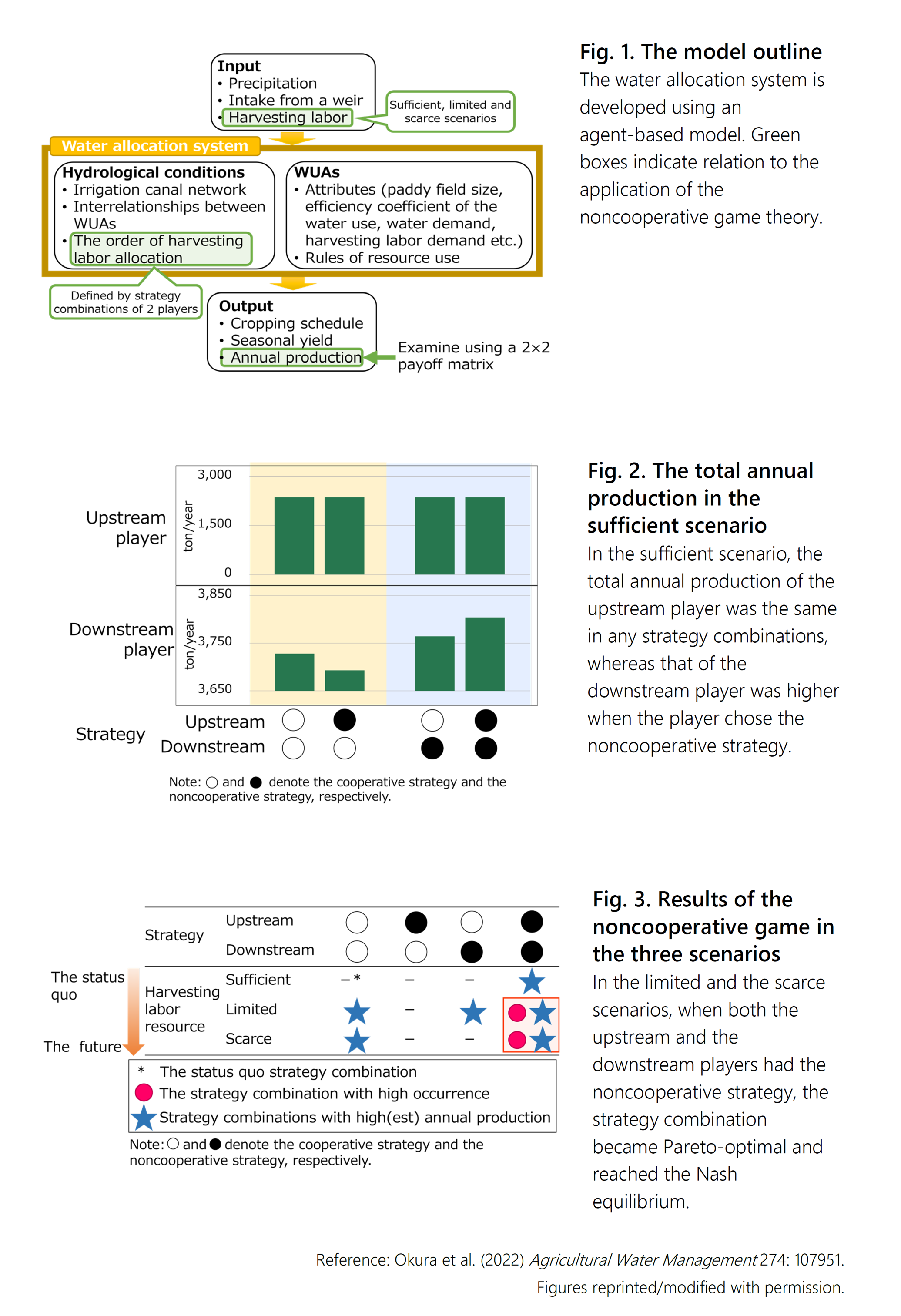Game theory predicts changes in community values regarding resource allocation held by Subaks in Bali
Description
In the irrigation sector, Water Users Associations (WUAs) play an essential role in ensuring sustainable and efficient resource use while adapting to changes such as climate change and a declining agricultural population. To effectively involve WUAs in sustainable resource management, it is important to lay out the rules in use and the community values of resource use in WUAs, as well as understand the structure of water conflicts. Subaks, the traditional WUAs in Bali, Indonesia, are known for their cooperative water management. However, as social structures in Bali are changing, harvesting labor resources are also declining, affecting the water management of subak systems. Using a subak system as a case study, this study proposes a method for analyzing resource allocation conflicts using agent-based modeling and the noncooperative game theory.
An agent-based model was developed to replicate the water allocation system of the target area. In the model, agents representing WUAs with various attributes attempt to maximize annual rice production by following the rules of resource use (Fig. 1). The model’s inputs are water and harvesting labor resources, and its outputs are a cropping schedule, seasonal yields, and the annual production of each agent. To assess the strategy combinations of the agents regarding the order of harvesting labor allocation, the noncooperative game was formulated. The strategies of the agents are the cooperative strategy (Cs) and the noncooperative strategy (Ns). If an agent chooses Cs, it prioritizes upstream agents, whereas if it chooses Ns, it prioritizes agents with larger paddy fields. The agents are categorized into 2 players: the upstream and the downstream players, and the total annual productions of the 2 players were examined using a 2 ╳ 2 payoff matrix. To analyze the influence of harvesting labor shortage, three scenarios of different harvesting labor were generated: sufficient, limited, and scarce scenarios. In the sufficient scenario, the total annual production of the downstream player was higher when it chose Ns, contrary to its status quo strategy combination, i.e., when both players chose Cs. This suggests that maintaining cooperative relationships between subaks is outweighed by maximizing individual production (Fig. 2). The results of the limited and the scarce scenarios suggest that as harvesting labor shortage progresses, the value of noncooperative labor resource use increases (Fig. 3), which could affect any allocation of other limited resources.
The results show that the model is useful for analyzing resource allocation conflicts. Additionally, it can potentially evaluate, for example, a countermeasure against harvesting labor shortage before its implementation. As a support tool, this model can help revise resource use rules to adapt to environmental and social changes.
Figure, table
- Research project
- Program name
- KAKEN
- Term of research
-
FY2020–2022
- Responsible researcher
-
Okura Fumi ( Rural Development Division )
KAKEN Researcher No.: 10880297Budiasa I Wayan ( Udayana University )
Kato Tasuku ( Tokyo University of Agriculture and Technology )
ORCID ID0000-0003-4473-1131KAKEN Researcher No.: 10302332 - ほか
- Publication, etc.
-
Okura et al. (2022) Agricultural Water Management 274: 107951.https://doi.org/10.1016/j.agwat.2022.107951
- Japanese PDF
-
2022_A05_ja.pdf868.17 KB
- English PDF
-
2022_A05_en.pdf680.09 KB
* Affiliation at the time of implementation of the study.

